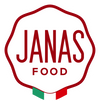Cannonau, the oldest wine in the Mediterranean area, which today becomes the elixir of long life
When we talk about Cannonau, we are not talking about an ordinary wine, but about the king of Sardinian wines and flavours. Cannonau is, in fact, a native vine cultivated on our island for over 3200 years to produce a red or rosé wine - with a strong personality and alcohol content - for which the denomination of controlled origin is most appropriate! In fact, it has been ascertained that Cannonau di Sardegna not only does not have Spanish origins (in Spain it is known as Garnacha), but is to all intents and purposes 'the oldest wine in the Mediterranean area'. It is a wine that has made the Sardinians the leading producers of red wine – no offence to the French - and that today is counted among the elixirs of long life of a blue zone that the whole world envies: Sardinia.
Where and how Cannonau is produced
Cannonau is a vine that fears nothing, neither the harshness of the mountains nor the wind of the coast. It is cultivated throughout Sardinia and contends for fame - now worldwide - only with its white brother, Vermentino di Gallura DOCG (Controlled and Guaranteed Denomination of Origin). But do you know where its name comes from? Probably not, unless you know Sardinian... and at the same time what happens to the Cannonau grapes during fermentation.
While the grape pips (the seeds) tend to settle at the bottom of the vats, the skins tend to rise to the surface, creating a sort of natural film that has to be stirred up. So, when the vats boil over, the grapes have to be stirred, which in Sardinian is called indeed 'cannonare'.
The Cannonau is then put to age in oak or chestnut barrels for at least a year, three if it wants to be called "Cannonau Riserva".
When young, its colour is as red as ruby and bears scents of red fruits. As it ages, it turns orange and is loaded with sweet or spicy scents, or even slightly bitter with nuances reminiscent of coffee or liquorice. It all depends on the soil and the tannins. In some cases, it can even become liqueur-like.
In order to overcome this "island" character, strong and with a high alcohol content, it can be blended with other grapes, but we do not recommend it. Cannonau, after all, is like the Sardinians. Changing them is a vain enterprise... sometimes counterproductive!
Joking aside, it can only be called Cannonau Doc di Sardegna if any other grapes are added, but not more than 1%.
How to pair Cannonau
Whether red or rosé, Cannonau is jealously guarded by our producers in order to forge its character and provide the most demanding palates with the perfect match for savoury meats - lamb, sausages or the classic Sardinian suckling pig (also known as porceddu) - and for mature cheeses, especially Sardinian Pecorino Pdo.
Today, it is a wine for special occasions and festive days, but it should not be forgotten that for many years it was the wine of rest for the many farmers engaged in the hard work of the countryside. Centenarian farmers, it seems, so much so that Cannonau has also become the object of study by scientists investigating the secrets of the planet's so-called "blue zones". Areas in which the quality of life and food, including a good glass of wine, seems to be the basis for a peaceful and prolonged old age. In short, our most famous red wine, thanks to its very high content of Resveratrol (an important phenol), would also be an elixir of long life! It's not clear how much should be consumed... but the classic two glasses a day, in the name of common sense, seems to us the perfect measure. What do you think?
Puoi acquistare il Cannonau online
Ecco i Cannonau consigliati da Janas food:
| Dimonios – Sella&Mosca | Blasio – Cantine di Dolianova |
Icorè rosso – Cantina di Dorgali |
D53 – Cantina di Dorgali | Sincaru – Vigne Surrau |
Messadore – Cantina Galavera |

